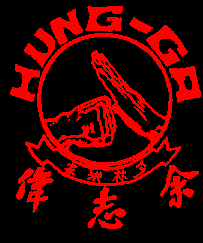
Links

Links
The following represents my own thoughts and opinions, and does not necessarilly represent those of my Sifu, Yee Chi Wai, the International Yee's Hung-Ga Kung-Fu Association, its branch schools, instructors or students. These are my own thoughts and opinions. At least the opinions are informed, educated ones. Email me with your thoughts, and we can discuss them here.
I recently came upon a website selling downloads of ebooks, complete formatted texts with illustrations, etc. They run in Adobe or some such software application, and reside on your hard drive where you can read them as often as you like once you have paid for them. Nothing wrong with that-free enterprise and all. Actually, it's a great idea to obtain books this way and store them right in your computer. The problem with the site, is that it sells self-instructional books on various styles of gung-fu.
Now, understand that I have nothing against good reference books on gung-fu. They are a tremendous resource for those of us making a serious study of the arts. The problem is that the site is proposing in a rather straight forward manner that it is the easiest, most convenient, and cost-effective way to learn gung-fu at home. Let's take a look at why learning on your own from a book does not work.
Possibly the principle reason that a body cannot learn from one of these books is that they rely on static photographs. It is nice that they show correctly formed postures and have prose descriptions of the postures including spacing between the feet, weighting, etc., but it ignores a central problem - the postures are stances, and stances are more movement than they ever are structure.
It is sometimes disheartening to see discussions on martial arts forums that still center only on the study of stance as a frozen formation, and its inherent strengths and weakenesses. For example:"The horse stance is strong this way and weak this way and is good for...". What it is good for and what we can do with it is more a function of how we move in and out of it. That final, square-shaped posture with the equal weighting between the feet is the culmination of a movement that led to that point. Static postures are in themselves worthless. As a way to move into or away from an opponent, to apply power through the legs perhaps to disrupt the opponent's base or to thwart a low attack, they require well-defined motions, with lines of movement and momentum to add to their effects. The structure of any stance is important in the way that the structure of any other fighting technique is important - it allows for the application of power in a certain way to achieve a desired effect. So, the student of boxing must pay sufficient attention to the shape of the stance so that the movement leading to it culminates in the best possible structure to support the student's intentions.
So, why spend time sitting in horse or other stances? Strong legs that are comfortable moving in and out of these stances are vital to using them. Stances that will not crumble on contact with an opponent are critical. Root, a vital component in stability, comes out of such training. Besides, the stronger the leg muscles, the greater the power that can be generated through stance motions. Stance sitting can also be used in conjunction with types of breathing and other techniques to help train the chi to the dan tien or to strengthen some of the internal organs, so the practice has a definite internal component.
The boxing student at some point, needs to move away from looking at stances from the perspective of frozen, static structures, and towards studying them as dynamic systems of motion in order to reach a higher level of understanding of the art that they are studying and to discover greater ranges of possibilities in their chosen arts. Unfortunately, books show only the end points of motions. The transitions are missing, and this by itself will keep the uninitiated from ever properly learning the art. Proper lines of movement, shifting of weight, application of power, all are beyond the capability of a book to transmit to the new student. Stances are not simply fancy ways to stand - they are tools. They do things. Other subtleties,such as the ging, can never be gleaned from a book. A student needs a good sifu for that.
Books have their place, especially for the prospective student who is still shopping for a school. Learning requires a teacher. If you think you might be interested in Hung-Ga, then I invite you to follow the Other Yee's Hung-Ga Sites link to find a teacher near you.
| Home | Family Tree | Five Animals | Forms | Other Yee's Hung Ga Sites |